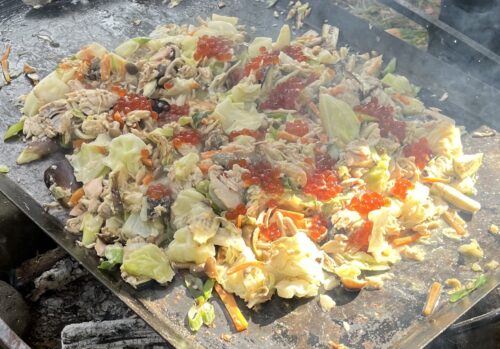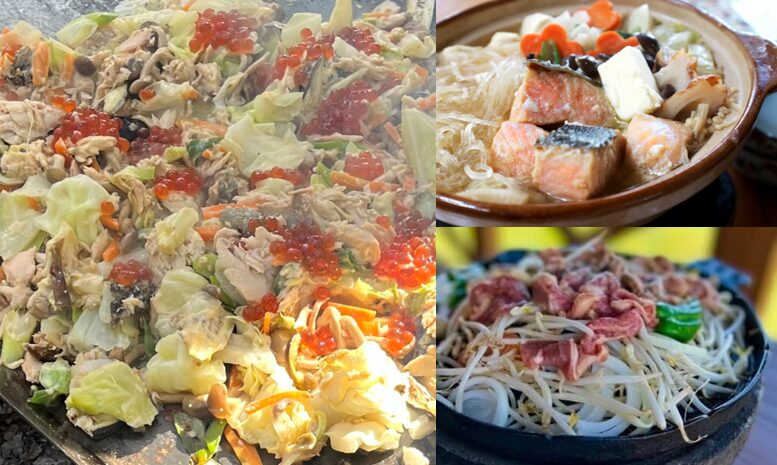There are so many hidden gems in Hokkaido. You can see beautiful scenery e.g.; lakes, mountains, forest, sea and so on. I would like to share some gems in Hokkaido. Today, let’s talk about “Three Must Eat major cuisines in Hokkaido.”
ISHiKARI Hot Pot
Around the 1950s, Ishikari City’s salmon seine fishing attracted attention as a “symbol of Hokkaido’s fisheries industry” and many tourists came to see the fishing. Since there was a time delay between putting the nets in the sea and pulling them out, ISHIKARI hot pot was served to the tourists waiting for the time to pulling nets, and it is said that the dish became well known nationwide due to its delicious taste.

Ishikari Hot Pot is made by adding chopped salmon meat and fish roe to a kombu (kelp) broth with vegetables and seasoning with miso. Vegetables often include onions, cabbage, leeks, radish, shiitake mushrooms, tofu, and other ingredients. Although it is a home-style dish, it can be eaten at restaurants.
Salmon Chan-Chan YAKI (Grilled salmon and vegetables with miso)
It is said to have originated in the 1930s, when fishermen caught salmon on board their boats and grilled them on an iron plate made from an oil drum. The history of salmon in Hokkaido is long, and the Ainu people used to catch salmon as a valuable source of food. Even today, Hokkaido boasts the largest catch of salmon in Japan, and there are many local dishes using salmon in Hokkaido.

Salmon Chan-Chan YAKI is made by adding chopped salmon meat, cabbage, carrots, onions, and Shimeji Mushroom seasoning by Miso. It is often served at local festivals and events but you can eat it in restaurant. It is also taught in cooking classes as a local dish of Hokkaido.
JINGISUKAN (Grilled mutton or lamb with sauce)
During the Taisho Era (1912-1926), when the outbreak of World War I made it difficult to import wool, the raising of cotton sheep was encouraged as a national policy. At that time, cotton sheep breeding also flourished in Hokkaido, and it is said that lamb began to be eaten around this time. After World War II, the shortage of clothing resources further increased the demand for wool throughout Japan, but as imported wool and synthetic fibers gradually spread to domestic wool, Hokkaido shifted from raising cotton sheep to raising sheep for mutton. It is said that “Jingisukan” is a dish that took root in order to increase the consumption of mutton at that time.

Jingisukan is mutton and vegetables grilled in Jingisukan hot plate. It is served with special Jingisukan sauce. When family and friends gather for cherry blossom viewing in the spring or barbecues in the summer, they sometimes have an outdoor Jingisukan party. There are so many Jingisukan restaurant in Hokkaido.
Rie

